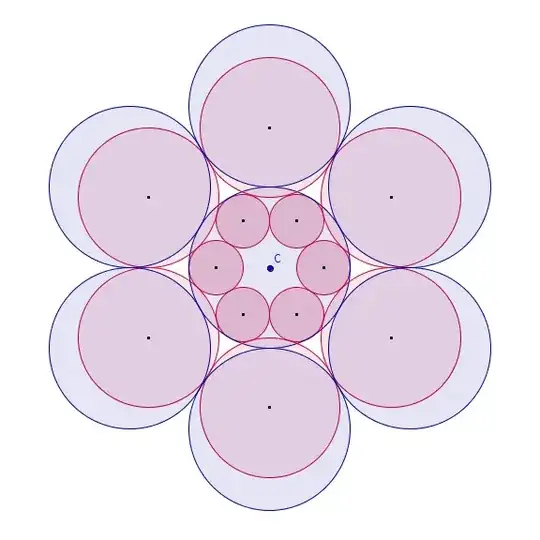Set things up so the inner blue circle is centered at the origin $(0,0)$ with radius $3$, so that the small red circles inside it each have radius $1$, and let one of them be centered at $(2,0)$. The ratio sought is then just the radius $r$ of any of the red circles externally tangent to adjacent inner small red circles. As in your diagram, these red circles extend slightly inside the blue circle of radius $3$ centered at the origin.
Now the coordinates of the center of the first such outer red circle will lie on the ray making an angle of 30 degrees with the positive $x$ axis, and the radius of this first outer red circle is the same as its $y$ coordinate. Therefore the center coordinates may be written as
$$P=(r\sqrt{3},r),$$ making use of trig functions of 30 degrees. What we need is an equation satisfied by this point. One can be found by considering the right triangle formed by $P$, the point $(2,0)$, and the projection of $P$ onto the $x$ axis. The formula obtained is then
$$(r\sqrt{3}-2)^2+r^2=(r+1)^2.$$
This has two roots, one of which is too small, and the correct root is (using the $+$ in the quadratic equation):
$$r = \frac{1+2\sqrt{3}+2\sqrt{1+\sqrt{3}}}{3} \approx 2.5899616.$$
It makes sense this radius (which is also the sought for ratio) should be less than $3$, since drawing pictures makes it clear one has to move the outer circles inward from your sketched larger surrounding blue circles, in order to make them tangent to the smaller circles. I was surprised by the appearance of a "radical inside a radical" in the result.
